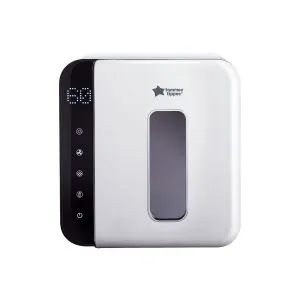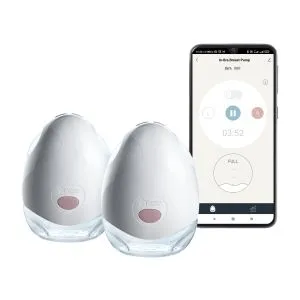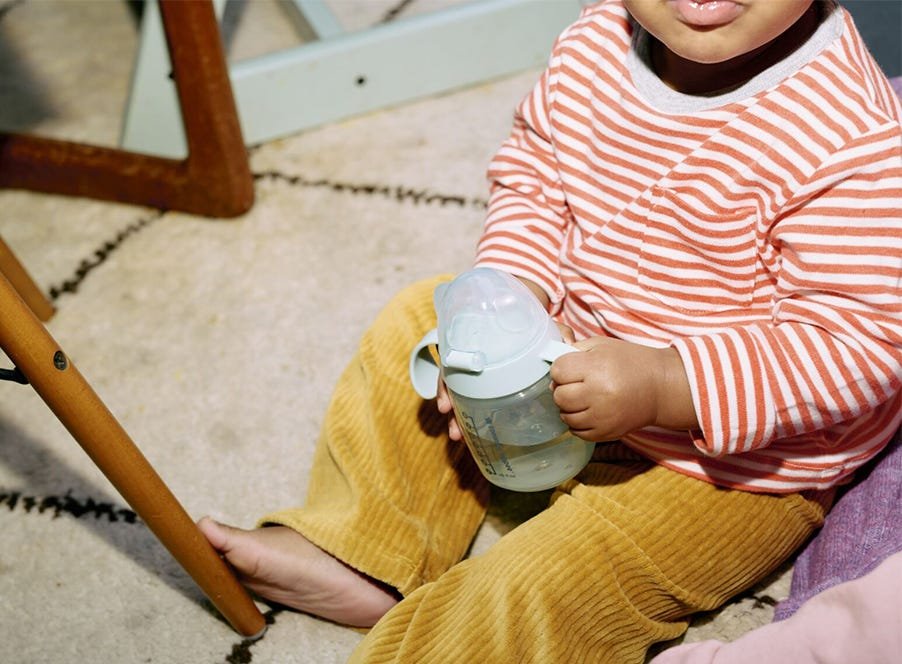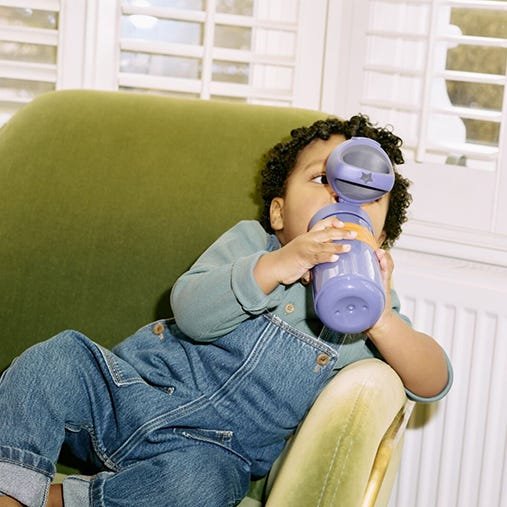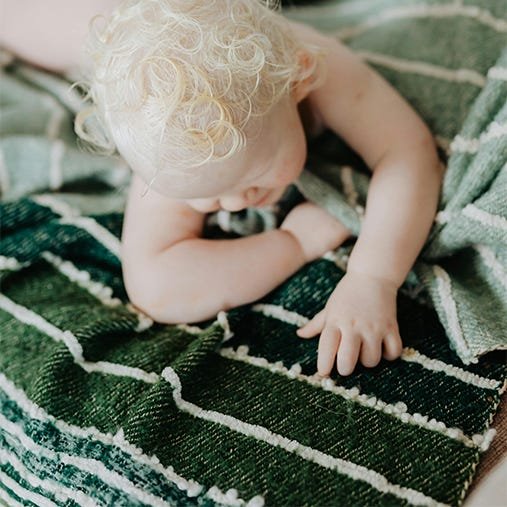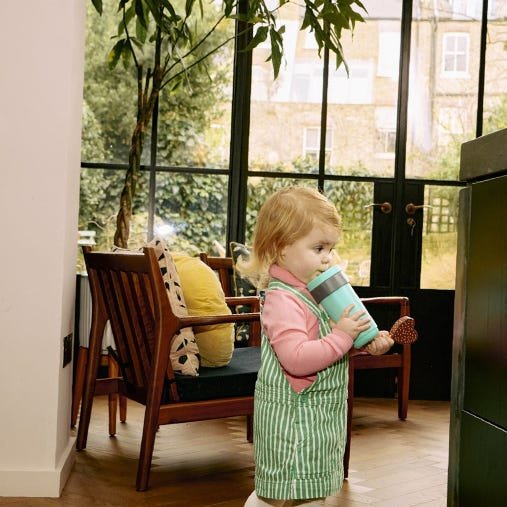How to transition from a bottle to a cup
Moving on from a bottle to a cup doesn't mean that you need to stop giving your child breastmilk or formula if you don't want to. Sometimes, offering water in a cup straight away can make the transition tougher, so some parents like to give their little one milk in a cup first to encourage them to start drinking from one before they transition to drinking water.
Remember that it's a process and something that will take time. It may be messy, with some spills along the way, but these 10 top tips should help you succeed...
1. Think about the timing of the transition
It's important to remember that your baby's bottle is a source of comfort for them. That means trying to wean them off when they're feeling unwell or going through a routine change (like going to a new childminder) might not go to plan.
2. Let them copy you
Try popping your little one in their highchair at mealtime and offer them some breastmilk or formula in a cup. That way, they will get used to sitting at the table to drink, and they'll start to mimic how you drink from a glass.
3. Transition from milk to water gradually
Try diluting their milk a little more each time to help them get used to drinking water. To cut their bottles out gradually, start by swapping the mid-day bottle first, then morning, then evening - waiting a few days or a week in between each stage.
Make your little one aware of the change by telling them that, although they're used to their bottle, they're growing up and now have a shiny new cup with water in - how exciting!
4. Out with the old, in with the new
Keep their old bottles out of sight and instead, put their colourful new cups on display.
5. Make it fun
Why not tell your little one that the Bottle Fairy is coming to visit and bringing them some nice new cups in exchange for their old bottles? Or, if it's Christmas time, perhaps Santa will come and swap their bottle for an exciting present!
6. Remember to be patient
Give lots of praise, and be affectionate - think more hugs, playtime, and extra stories at bedtime!
7. Start early
Gradually reducing the amount of milk offered in a bottle and introducing cups at an early age will help toddlers be best prepared for their weaning journey.
8. Reduce the night-time feeds
Night-time feeds can be the most damaging to your toddler's teeth. Reducing these not only helps protect their teeth but can allow them to move more into a 'big kid' feeding schedule. Try giving them their last feed in another room (other than their nursey) to make time between feeds and bed and stop that association.
9. Understand they may have an emotional attachment
If they do have an attachment to their bottle, try to comfort them in other ways, such as with stories, cuddles or by giving them their favourite toys.
10. Give them other calcium-rich foods
If you're concerned the move from bottle to cup will reduce their calcium intake, be sure to give them plenty of calcium-rich snacks instead, such as cheese and yoghurts.
To wrap up, when you're transitioning from bottle to cup, it's important to think about your little one's unique temperament, and don't worry if your first try doesn't quite go to plan.
If you're struggling, you can always reach out to your doctor or a dedicated paediatric dietitian for advice.
What should my little one drink once they're used to their cup?
Try sticking to putting only water in your baby's cup if you can. Sugary drinks like fruit squash, carbonated beverages, milkshakes, and fruit juice can trigger tooth decay. Children under three years of age should not have anything that contains artificial sweeteners.
If you do offer them fruit juice or squash, dilute it with water (this should be 10-parts water to just one-part juice). Serve this alongside a meal to help minimise the risk of tooth decay.
It's also handy to know that after the age of six months, it's fine to give your child water from the tap without sterilising it first. But you should always make sure that you clean all parts of your baby's cup thoroughly and pay extra attention to any spouts or valves.
